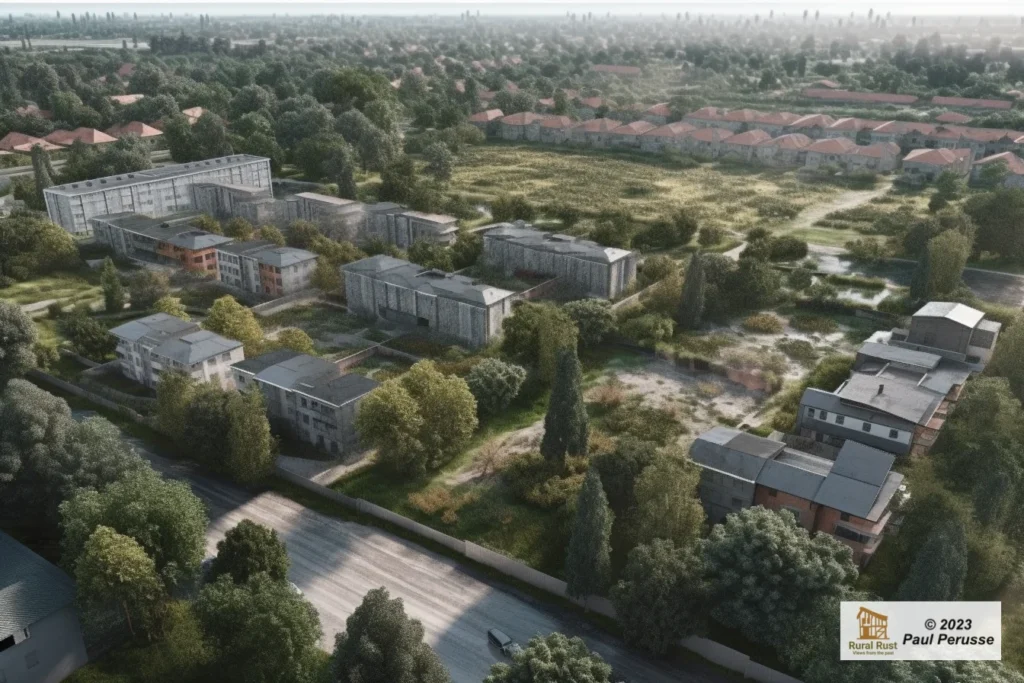- Urban creep can have several negative consequences, including:
- To address urban creep, various strategies can be implemented, such as:
Urban creep, also known as urban sprawl, refers to the uncontrolled expansion of urban areas into the surrounding rural or undeveloped land. This phenomenon is characterized by low-density, car-dependent development, and it often results in the loss of agricultural land, open spaces, and natural habitats. Urban creep is driven by various factors, such as population growth, economic development, and the desire for more living space.

Urban creep can have several negative consequences, including:
- Loss of agricultural land: As cities expand, valuable farmland is frequently consumed by urban development, leading to the loss of agricultural productivity and increased reliance on imported food.
- Environmental degradation: Urban creep can lead to habitat destruction, deforestation, and the fragmentation of ecosystems. This contributes to the loss of biodiversity, reduced water quality, and increased air pollution.
- Increased carbon emissions: Urban sprawl promotes car dependency due to the low-density nature of the development and the separation of residential areas from commercial and employment centers. This results in increased greenhouse gas emissions from transportation and contributes to climate change.
- Strain on infrastructure and resources: The spread of urban areas necessitates the expansion of infrastructure like roads, sewage systems, and utilities. This can put a strain on local government budgets and resources, as well as increase the overall energy consumption of the community.
- Reduced quality of life: Urban sprawl can lead to longer commutes, increased traffic congestion, and reduced access to public transportation. Additionally, the loss of open spaces and natural areas can have negative impacts on mental and physical health.
- Social segregation: Low-density development can contribute to the separation of different socio-economic groups and reduce the availability of affordable housing options, leading to social segregation and inequality.
To address urban creep, various strategies can be implemented, such as:
- Smart growth and urban planning: Encourage compact, mixed-use development that promotes walkability, access to public transportation, and efficient land use.
- Land-use regulations: Implement zoning policies that protect agricultural land, natural habitats, and open spaces from urban development.
- Incentivizing infill development: Encourage development within existing urban areas, making use of vacant or underutilized land, to reduce the need for expansion into rural areas.
- Investing in public transportation: Improve and expand public transportation options to reduce car dependency and promote sustainable mobility.
- Promoting sustainable development: Encourage environmentally friendly building practices, energy-efficient infrastructure, and the preservation of green spaces within urban areas.
By implementing these strategies, cities can mitigate the negative consequences of urban creep and promote more sustainable and livable urban environments.
